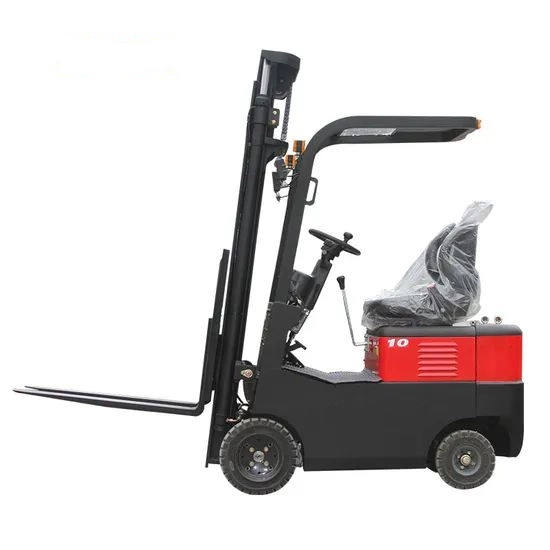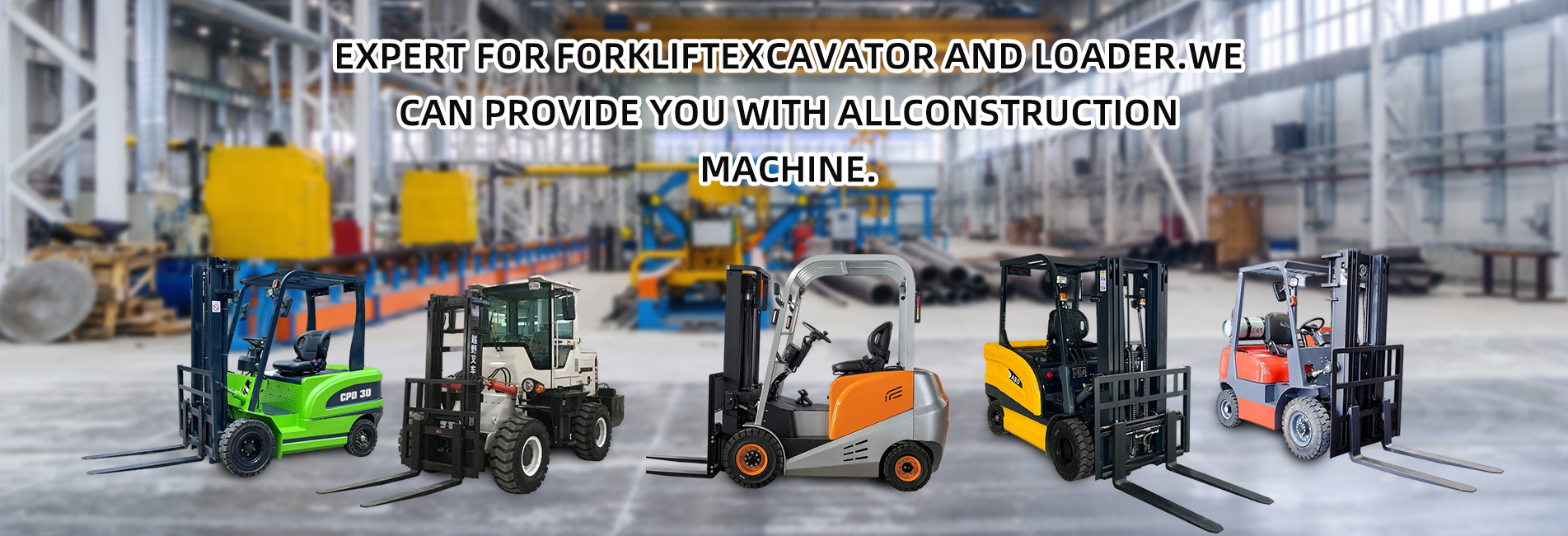When choosing a small-tonnage forklift (usually referring to forklifts with a rated lifting capacity of 1-3.5 tons), it is necessary to comprehensively consider various factors such as the usage scenario, operation requirements, and cost budget. The following is a detailed purchasing guide to help you make an appropriate choice:

I. Clarify Core Operational Requirements
First, it is necessary to clearly define the usage scenario and specific tasks of the forklift, which is the basis for model selection:
Working Environment
- Indoor vs. Outdoor: For indoor use (such as warehouses, workshops), electric forklifts are preferred (low noise, no pollution); for outdoor use (such as freight yards, construction sites), internal combustion forklifts can be considered (strong power, adaptable to complex road conditions).
- Ground Conditions: Flat cement floors are suitable for electric forklifts; for muddy and bumpy roads, internal combustion forklifts are recommended (tires can be pneumatic or solid, and solid tires are more wear-resistant).
- Space Constraints: For narrow passages (such as between shelves), forklifts with small turning radii (such as three-wheel electric forklifts) are required; for high shelf operations, attention should be paid to the lifting height (usually 3-6 meters, and can be customized for special needs).
Load Requirements
- Determine the maximum lifting weight: Choose according to the daily heaviest goods, with a 10%-20% margin reserved (for example, if you often transport 2-ton goods, a 2.5-ton forklift is more reliable).
- Load center distance: The "load center" in the forklift parameters is usually 500mm. If the center of gravity of the goods is deviated (such as long goods), a model with a larger load center should be selected to avoid overloading.
Operation Intensity
- Light operation (≤4 hours per day): Electric forklifts (low maintenance cost) or economical internal combustion forklifts are sufficient.
- Heavy operation (≥8 hours per day): Priority should be given to brands with strong durability. For electric forklifts, attention should be paid to battery capacity (lead-acid batteries or lithium batteries can be selected, and lithium batteries have longer Flight duration and faster charging). For internal combustion forklifts, large-horsepower engines should be selected.
II. Comparison and Selection of Forklift Types
Small-tonnage forklifts are mainly divided into electric forklifts and internal combustion forklifts, each with its own advantages and disadvantages:
| Type | Advantages | Disadvantages | Applicable Scenarios |
|---|---|---|---|
| Electric Forklift | No exhaust gas, low noise; easy to operate; low maintenance cost | Battery-dependent Flight duration (needs charging); high initial purchase price | Indoor warehouses, food/pharmaceutical workshops, scenarios with high environmental requirements |
| Internal Combustion Forklift | Strong power, unlimited Flight duration;low initial purchase price | High noise, exhaust emissions; high maintenance frequency (oil change, etc.) | Outdoor operations, heavy-load handling, scenarios without environmental restrictions |
- Subtypes:
- Electric forklifts: divided into counterbalanced (good stability, suitable for heavy loads) and three-wheel (small turning radius, suitable for narrow passages).
- Internal combustion forklifts: divided into gasoline-powered (medium power, suitable for light loads), diesel-powered (strong power, suitable for heavy loads and harsh environments), and liquefied petroleum gas (LPG, switchable fuel, suitable for both indoor and outdoor use).
III. Consideration of Key Parameters and Configurations
Core Parameters
- Lifting height: Choose according to the height of the shelves. For example, a 3-layer shelf should be matched with a 3-3.5-meter lifting height, and a high-rise shelf requires a lifting height of more than 5 meters (note: the higher the lifting height, the maximum lifting weight will decrease slightly).
- Turning radius: Directly affects the passability in narrow spaces. The turning radius of three-wheel electric forklifts can be as low as less than 1.5 meters, and that of counterbalanced forklifts is about 2-3 meters.
- Battery/fuel: For electric forklifts, choose lithium batteries (long service life, fast charging, but expensive) or lead-acid batteries (cost-effective, but heavy and short service life); for internal combustion forklifts, choose diesel (strong power) or LPG (good cleanliness).
Practical Configurations
- Operational comfort: Seat shock absorption, adjustable steering wheel, reasonable pedal layout (attention should be paid to long-time operations).
- Safety configurations: Fork lifting limit, reversing radar, anti-skid tires, emergency power-off switch (especially for electric forklifts).
- Auxiliary functions: Side shifter (convenient for adjusting the left and right positions of the forks, reducing alignment time), clamp (optional when handling cartons, barrels, etc.).
IV. Cost Considerations
Cost Accounting
- Purchase cost: Electric forklifts (about 50,000-150,000 yuan) > internal combustion forklifts (about 30,000-80,000 yuan). Lithium battery electric forklifts are 30%-50% more expensive than lead-acid battery ones.
- Operating cost: Electric forklifts (electricity fee + battery replacement, about 10,000-20,000 yuan per year) < internal combustion forklifts (fuel + engine oil + maintenance, about 20,000-40,000 yuan per year).
- Suggestions for long-term use: If the daily operation time is long, the low operating cost of electric forklifts is more cost-effective; for short-term or occasional use, the initial investment of internal combustion forklifts is lower.
Summary
The selection of small-tonnage forklifts can follow the principles of "scenario priority, parameter matching, and cost control":
- Light indoor loads → three-wheel electric forklifts;
- Heavy indoor loads → counterbalanced electric forklifts;
- Complex outdoor road conditions → diesel internal combustion forklifts;
- Limited budget and low operation intensity → economical internal combustion forklifts.


